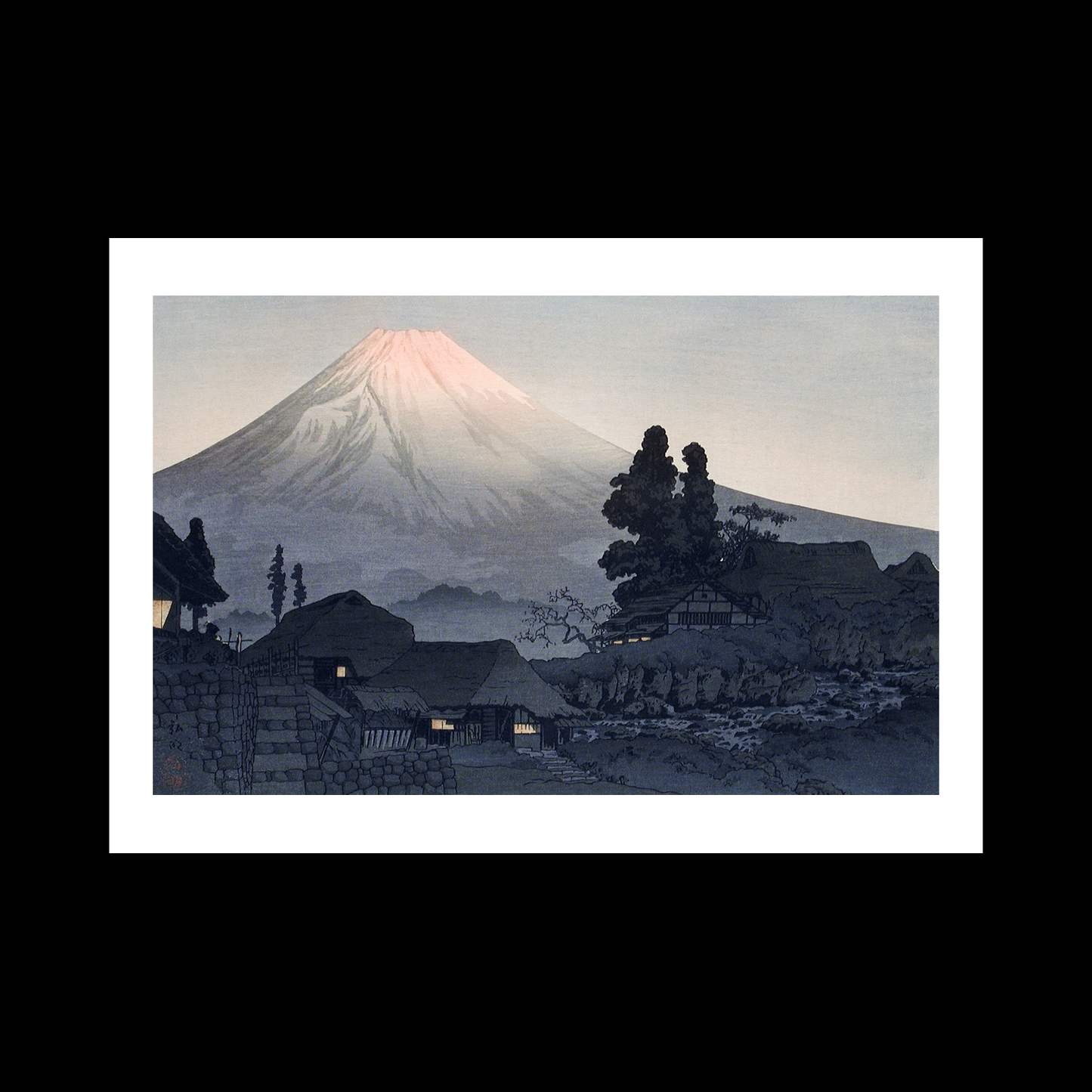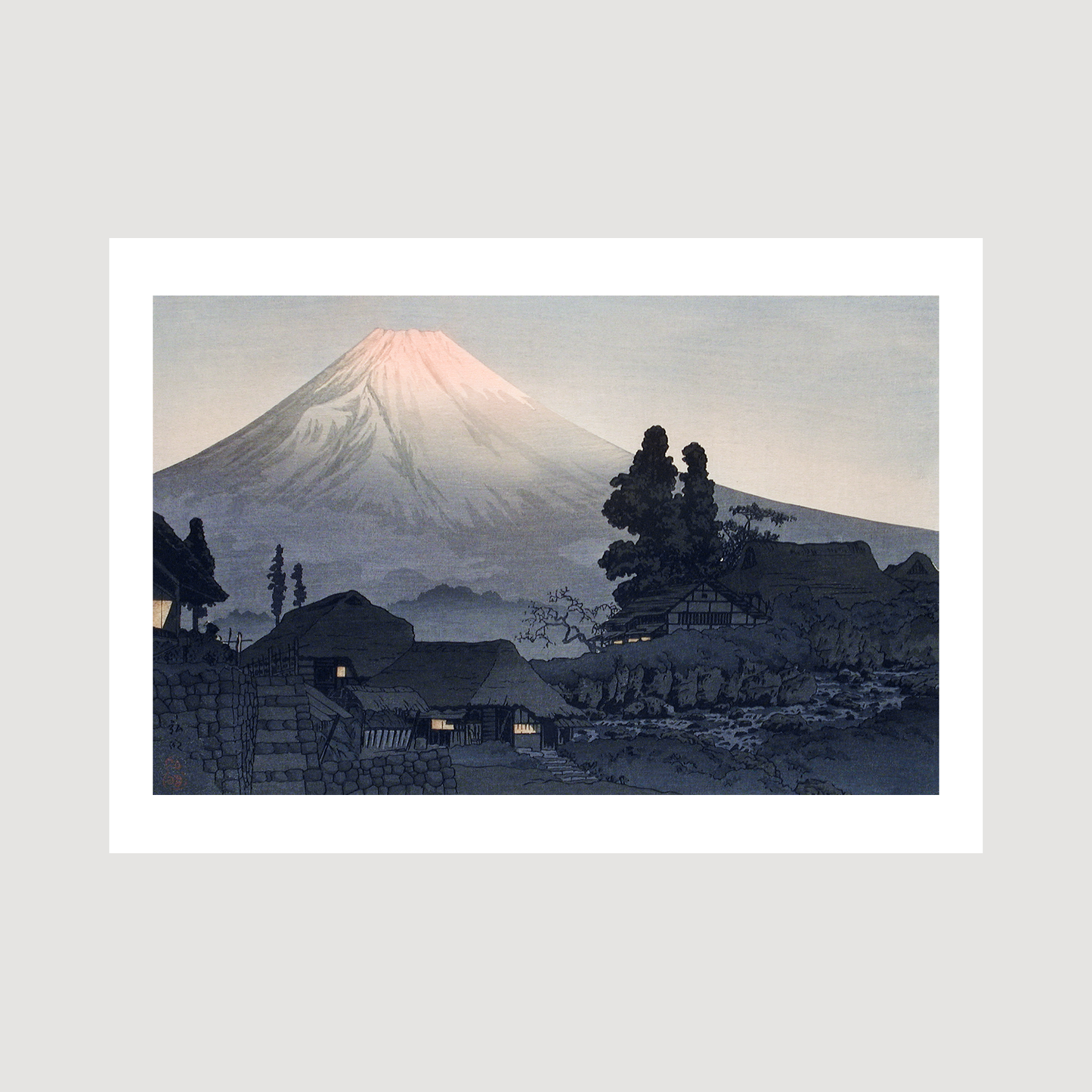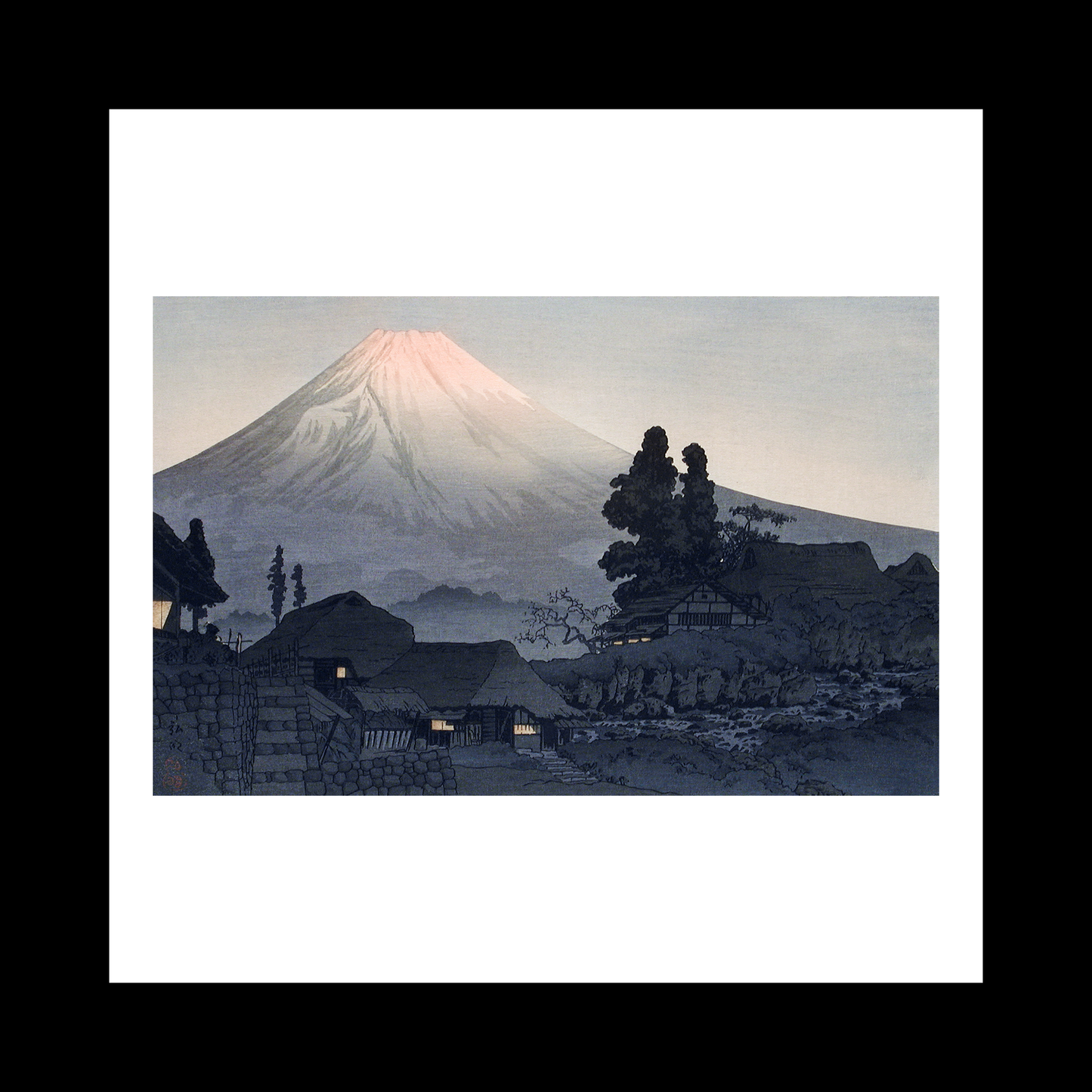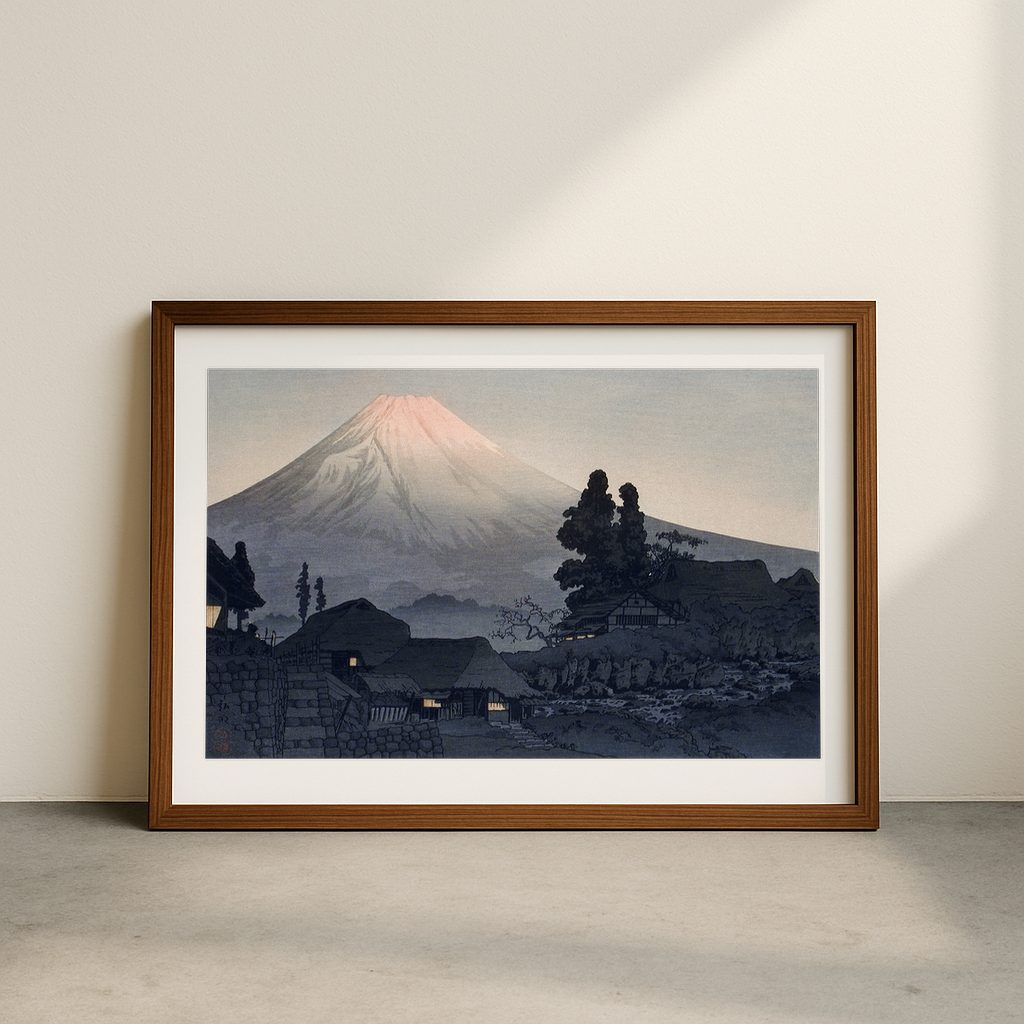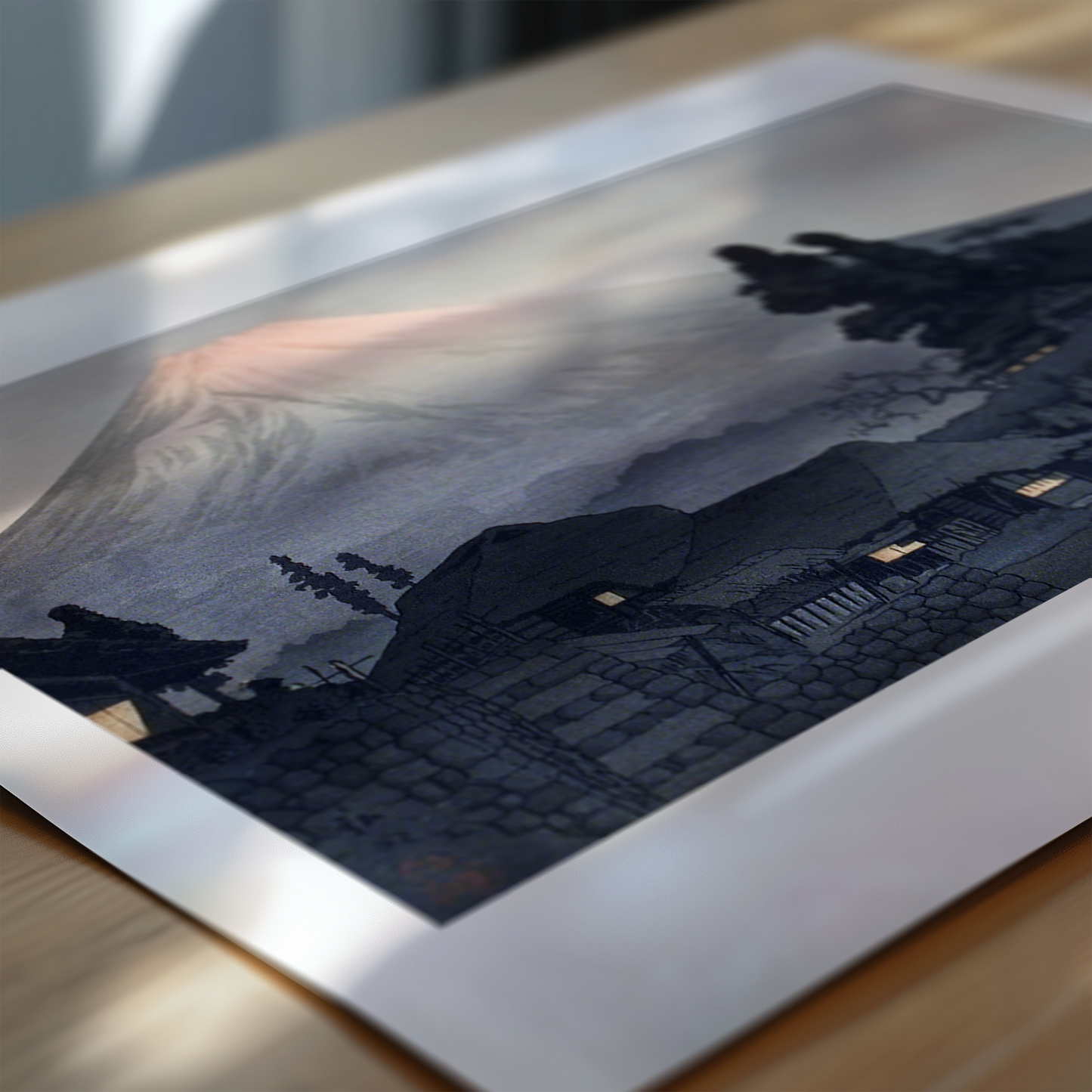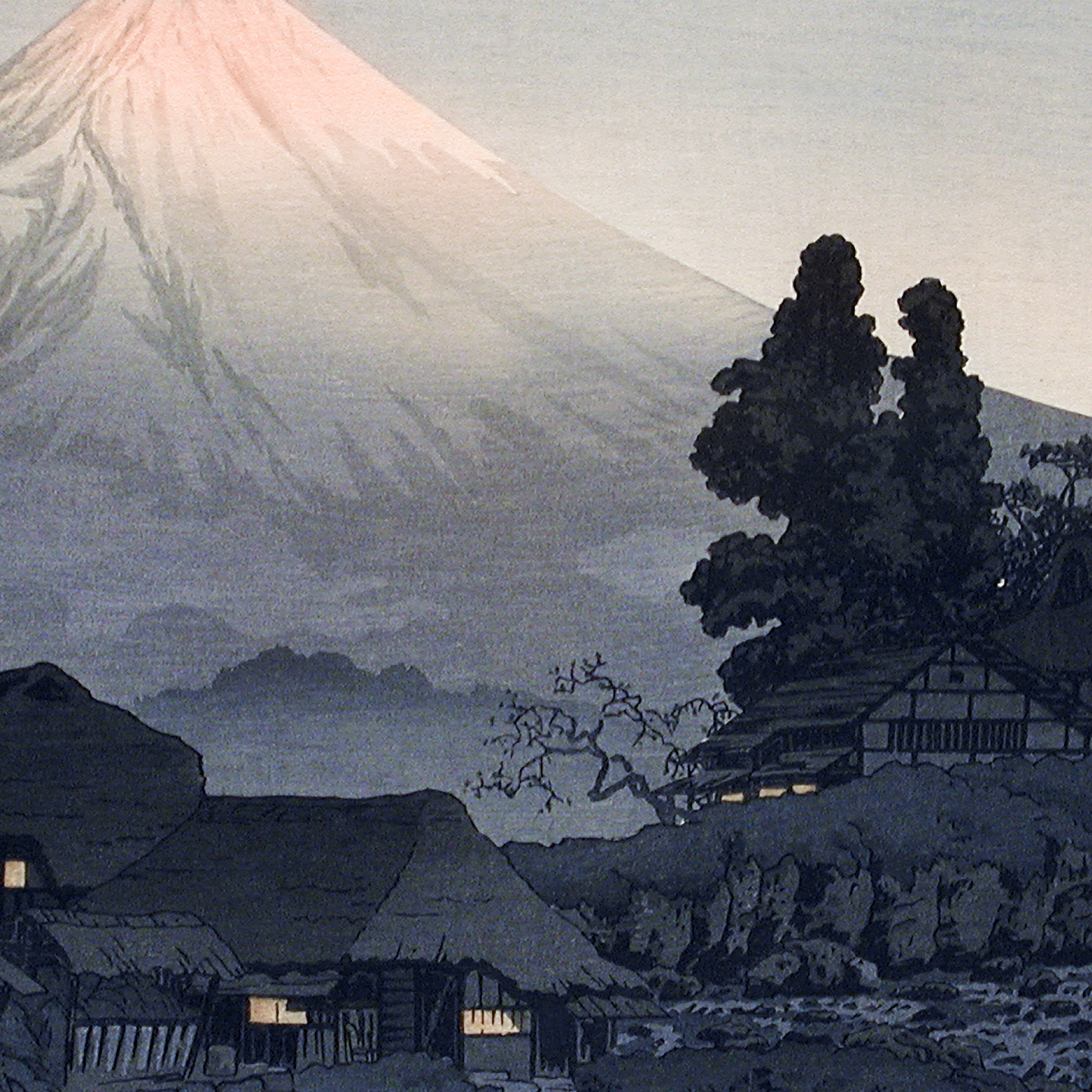1
/
of
6
Mount Fuji From Mizukubo
Mount Fuji From Mizukubo
Regular price
£12.45 GBP
Regular price
Sale price
£12.45 GBP
Taxes included.
Quantity
Couldn't load pickup availability
Hiroaki Takahashi's 1932 woodblock print of Mount Fuji from Mizukubo showcases the artist's masterful command of the shin-hanga style, a 20th-century movement that renewed traditional Japanese woodblock printing techniques. The composition captures Japan's revered mountain in subtle blues and greys, with delicate cloud formations creating a ethereal atmosphere. The foreground features carefully rendered traditional buildings and landscape elements, demonstrating Takahashi's precise attention to architectural detail and spatial depth.
Takahashi, also known as Shotei, created this piece during a period of significant cultural transition in Japan, when artists were balancing traditional subjects with modern printing techniques. His work bridges the gap between the ukiyo-e tradition and contemporary artistic sensibilities of the 1930s. This particular view of Mount Fuji from Mizukubo represents both his technical excellence and his commitment to preserving traditional Japanese landscape subjects.
The artist's choice of perspective is particularly noteworthy, positioning Mount Fuji as a distant yet dominant presence, while the foreground elements create a sense of intimate connection to daily Japanese life. The print exemplifies Takahashi's signature style of combining atmospheric effects with architectural precision. His use of colour gradation (bokashi) in the sky and subtle variations in the mountain's tone show his profound understanding of the woodblock medium and its capabilities for expressing natural phenomena.
The work reflects the shin-hanga movement's broader aims of appealing to both Western and Japanese audiences, combining traditional subject matter with modern printing techniques and aesthetic sensibilities. Takahashi's approach to this familiar subject demonstrates how Japanese artists of the period were reinterpreting their cultural heritage for a changing world.
View full details
Takahashi, also known as Shotei, created this piece during a period of significant cultural transition in Japan, when artists were balancing traditional subjects with modern printing techniques. His work bridges the gap between the ukiyo-e tradition and contemporary artistic sensibilities of the 1930s. This particular view of Mount Fuji from Mizukubo represents both his technical excellence and his commitment to preserving traditional Japanese landscape subjects.
The artist's choice of perspective is particularly noteworthy, positioning Mount Fuji as a distant yet dominant presence, while the foreground elements create a sense of intimate connection to daily Japanese life. The print exemplifies Takahashi's signature style of combining atmospheric effects with architectural precision. His use of colour gradation (bokashi) in the sky and subtle variations in the mountain's tone show his profound understanding of the woodblock medium and its capabilities for expressing natural phenomena.
The work reflects the shin-hanga movement's broader aims of appealing to both Western and Japanese audiences, combining traditional subject matter with modern printing techniques and aesthetic sensibilities. Takahashi's approach to this familiar subject demonstrates how Japanese artists of the period were reinterpreting their cultural heritage for a changing world.
